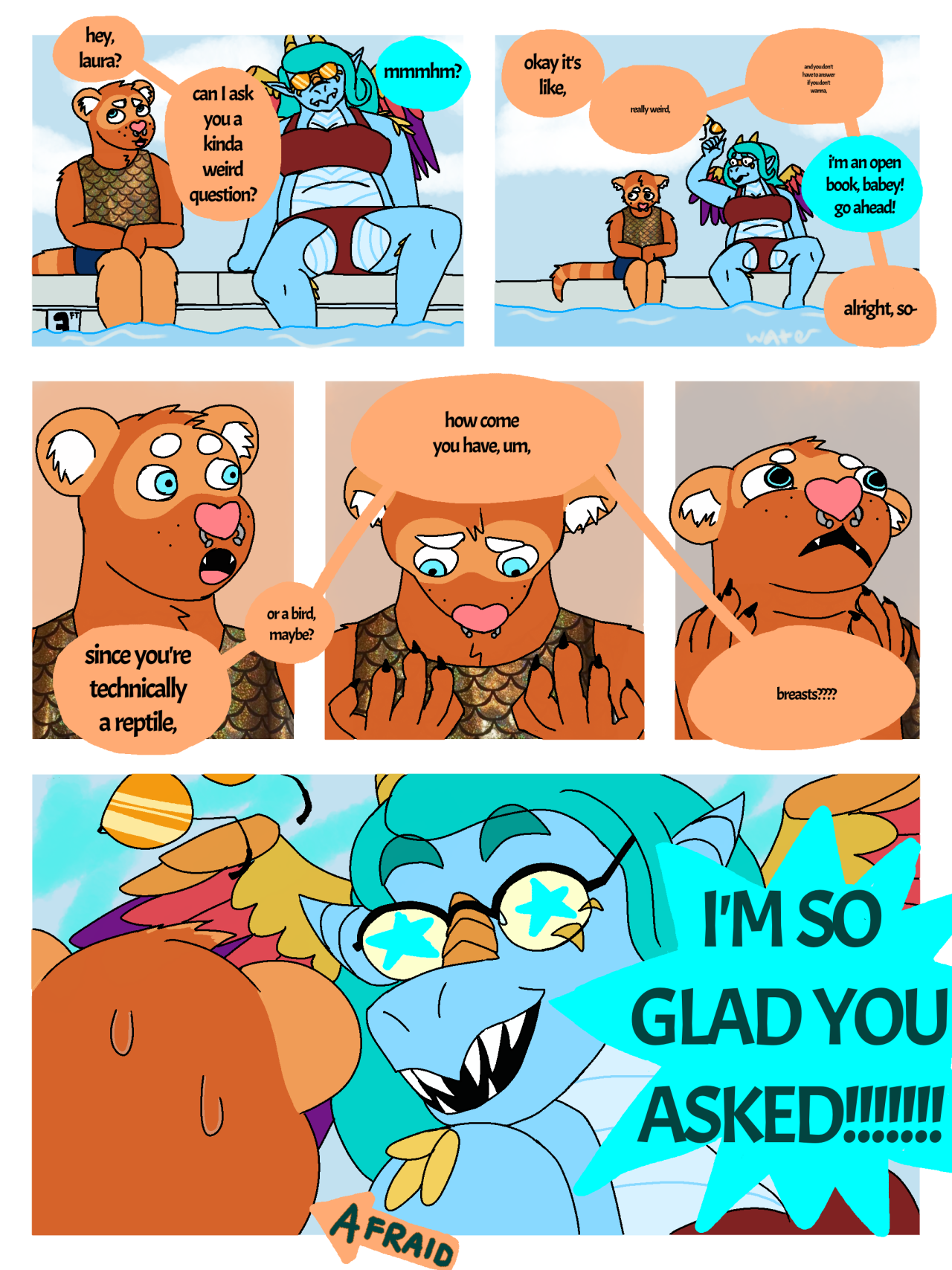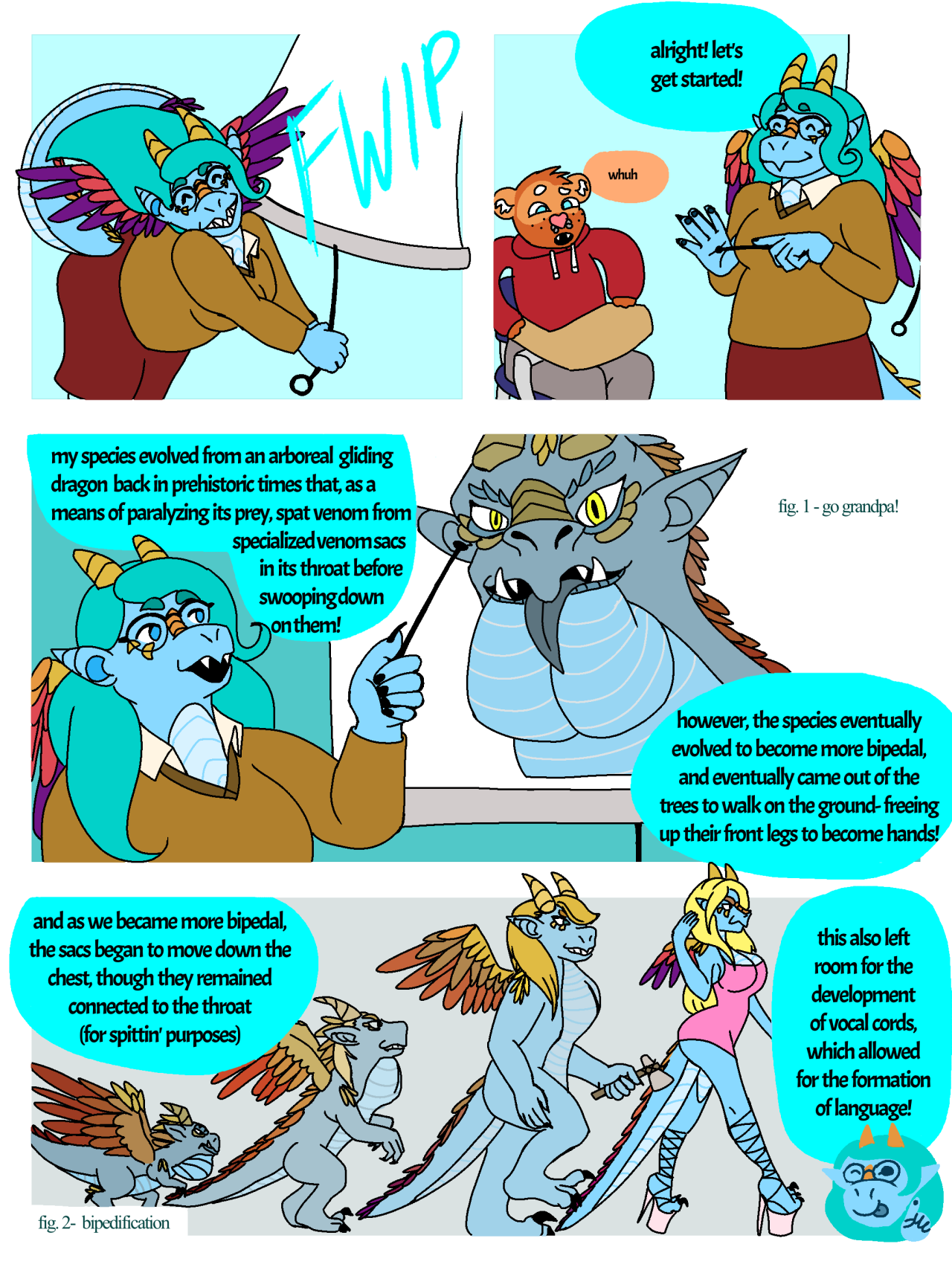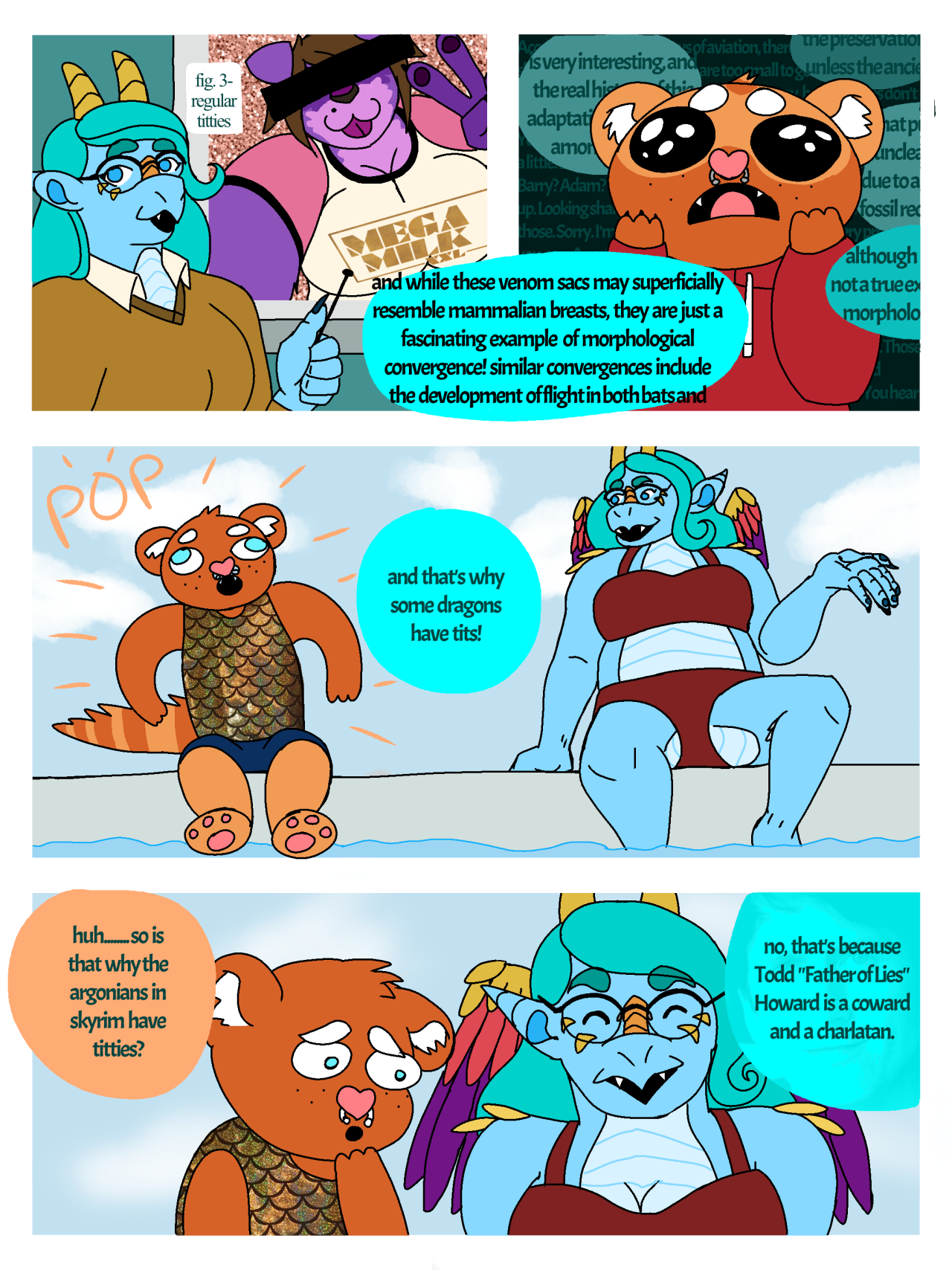












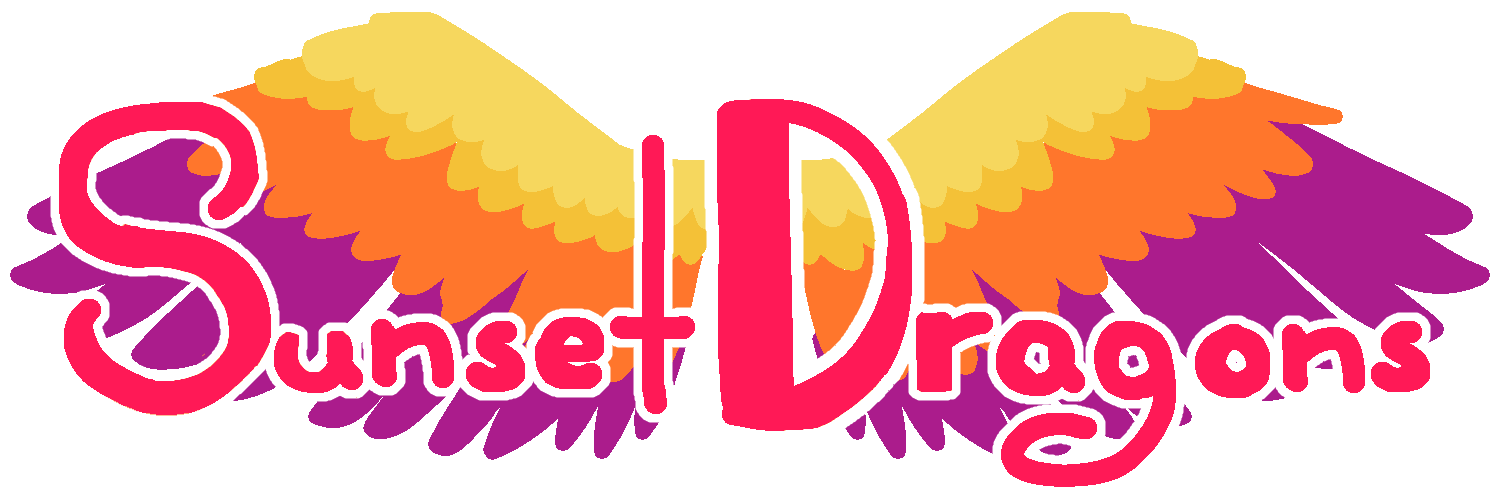
Sunset Dragons are a species of sapient bipedal dragons. They are named for their colorful plumage. Most Sunset Dragons have feathers that are a mix of reds, oranges, and yellows. Their scales can be any color of the sky, from very pale blue to a deep dark indigo. 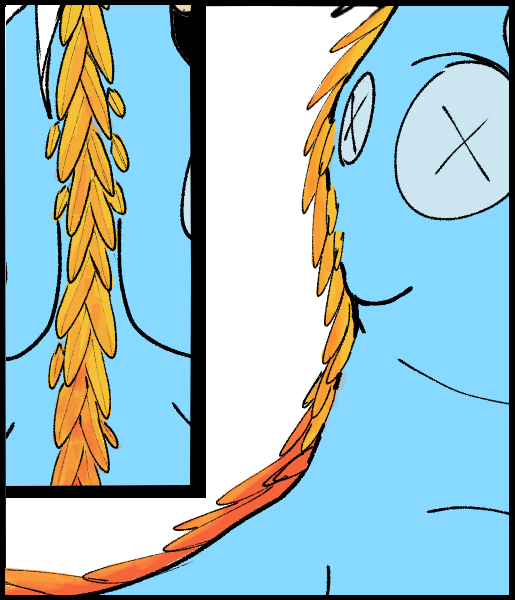 They usually have a lighter underbelly. Their blood is copper-colored. They are omnivorous and evolved from six-limbed arboreal gliding reptiles, known popularly as "Sunrise Dragons". They have feathers on their wings, along the ridge of their spine and tail, and in crests on their forelimbs. Check out the illustrations!
They usually have a lighter underbelly. Their blood is copper-colored. They are omnivorous and evolved from six-limbed arboreal gliding reptiles, known popularly as "Sunrise Dragons". They have feathers on their wings, along the ridge of their spine and tail, and in crests on their forelimbs. Check out the illustrations! 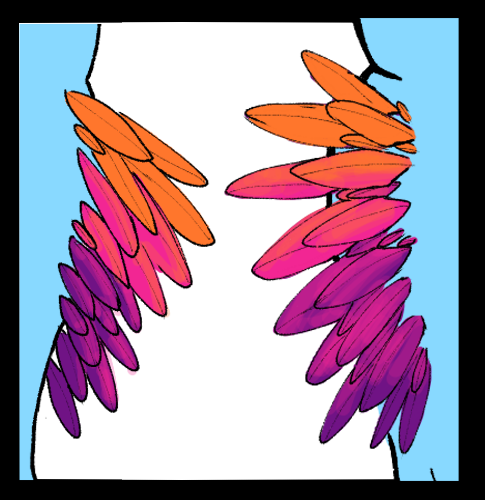 These ridges can be raised or lowered to display emotion (see the diagram to the right).
These ridges can be raised or lowered to display emotion (see the diagram to the right).
Their claws are usually a similar color to their plumage, but more dilute in hue. For example, Ruth's wings and feathers are mainly orange, and her claws and facial accent scales are a desaturated beige. A ridge of feathers surrounds their ears to funnel sound, like owls, and the ears are directional. Their horns usually point backwards. They have slitted eyes with good night vision, since Sunrise Dragons were (ironically) primarily crepuscular. The drawback to this is that most of them are nearsighted and have trouble seeing with precision in the day. Sunset Dragons have a lot of variation in body type and physical ability, just like humans. They are similarly capable of thriving in a variety of temperature ranges.
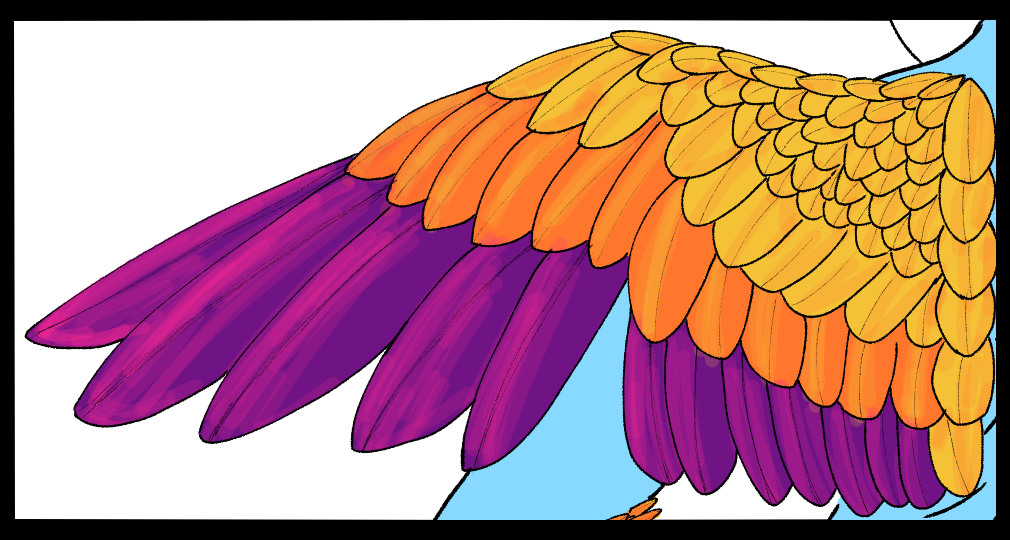

FUN FACT: Sunset dragons may appear to have hair on their heads like mammals, but it's actually a crest of super-fine feather quills that grows and looks exactly like hair because that's easier to draw! Did you know scales, beaks, and hair are made of beta-keratin, while hair and fingernails are made of alpha-keratin? Now you do!

Sunrise Dragons evolved in a temperate rainforest environment with year-round warm temperatures. They were homeothermic in the way that birds are. The most notable feature of the Sunrise Dragons was their prominent throat sac, which contained paralytic venom that could be spit from dozens of feet away with pinpoint accuracy. This venom was not particularly potent, and was primarily used to establish dominance in mating contests. As Sunrise Dragons evolved to become bipedal, the throat sac moved down to the chest. Because of this, all Sunset Dragons have big beautiful naturals. They're often mistaken for mammaries, but do not have nipples and are not sensitive. And they can still spit venom, so watch out!
These hexapodal lizards were highly territorial and "sang" in guttural chirps and trills to establish territory. They were capable of swimming like crocodiles, and while they could not fully fly, they could glide down from trees. Their hunting strategies often involved diving from trees into the water. Their backwards-pointing horns and thick scales around the face and jaw protected the soft and unprotected skin of the dragons' neck. When two Sunrise Dragons competed for the same mate, they would flash threat displays at each other and spit venom to see who backs down. Only in rare cases did this lead to a fight, as these large reptiles were loath to waste energy on things other than gathering food and mating.
The development of a bipedal body plan is thought to have been caused by a changing climate and a need to store energy more efficiently due to dwindling prey populations. Sunrise Dragons began to develop larger body fat deposits and migrate more for their meals. They developed tool use, and as their venom sacs descended further down their chests, their rudimentary vocal cords had more room to develop and eventually lead to spoken language. In the process of becoming bipedal, the species went from arboreal gliders to fully flightless. Their wings, along with the ridges of feathers along their limbs and spines, are used to display threats and emotion as well as signal attractiveness to mates. If a Sunset Dragon comes at you with their plumage looking especially thick and glossy, they are either trying to kiss you or trying to fight you.

Here is a comic I drew explaining why Ruth has boobs, way back in the early days of her first design (November 2020!) when she didn't even have her own name. It features Bink, my friend Em's ferretsona. Some of the info is outdated but I still like it. Enjoy!
